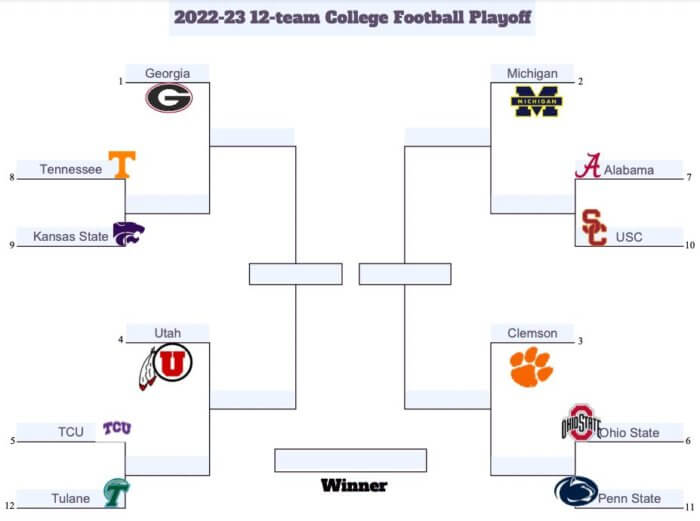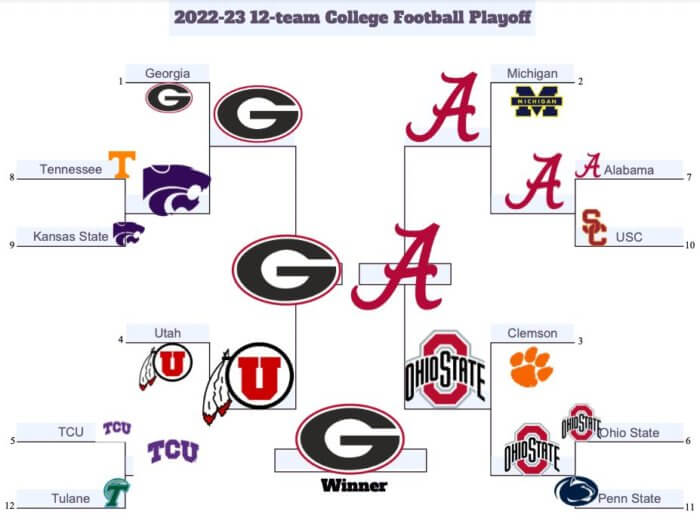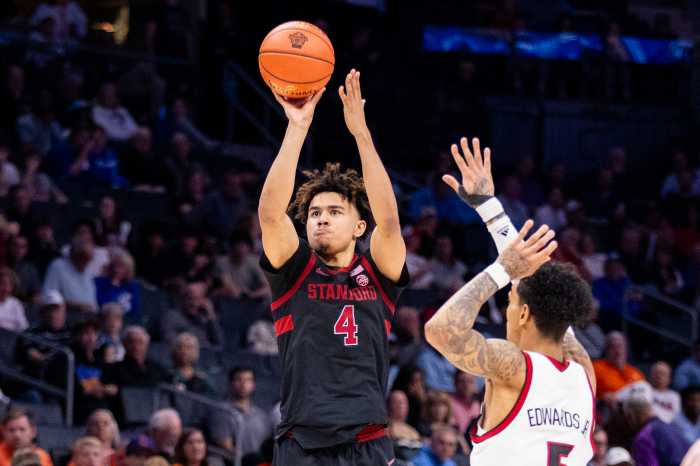On Sunday, the field for the College Football Playoff was finalized with Georgia, Michigan, TCU, and Ohio State claiming the four spots. However, with news earlier this week that the postseason would explain to 12 teams in 2024, we decided to see what the expanded bracket would look like and who might be likely to call themselves champions.
So what would the field look like if the 12-team playoff started this year?

Now, you may look at those top four seeds and be confused as to why Utah and Clemson are there. Remember that the new College Football Playoff model says that “the four highest-ranked conference champions will be seeded one through four and each will receive a first-round bye.”
Since Ohio State and TCU did not win their conferences, they would not be eligible for a bye. The highest-seeded conference champions would be Utah and Clemson, which means each qualifies for a bye in the new format.
Is that better? It’s really hard to say. Yes, we want to award conference champions, but Clemson getting a higher seed than TCU, Ohio State, and even Alabama seems tough to wrap your head around.
You may also be confused as to why Tulane is in as the 12-seed, even though Washington is currently ranked 12th in the playoff rankings. Well, the new rules stipulate that “the 12 teams will be the six conference champions ranked highest by the selection committee (no minimum ranking requirement), plus the six highest-ranked teams not included among the six highest-ranked conference champions.”
Among the top 11 teams, only five are conference champions (Georgia, Michigan, Utah, Clemson, and Kansas State). That means the 12th team needs to be the next highest-ranked conference champion, which leads us to Tulane, who is currently ranked 16th.
Is that fair? Sure, why not. Could Washington or Florida State or Oregon make a run for the title? It’s not likely, so why not give a team like Tulane a chance to stack up against the big boys?
Mock 12-Team College Football Playoff
So how would this all turn out if we had this bracket this year?

In the end, Georgia is still the best team in college football. It’s really hard to see them losing to anybody, but I can’t see it happening to Kansas State, who gets the nod over a Tennessee team without Hendon Hooker, and Utah, who I think would easily top TCU.
Tulane gets their shot at the big boys, but that big boy is also the smallest of the big boys in TCU, and I don’t think Tulane can hold up there.
Ohio State also benefits, weirdly, from the lower seed because instead of having to face Georgia, they get a rematch against Penn State, a team they beat handily, and then a showdown against a flawed Clemson team. That would set up a semi-final matchup against either Michigan or Alabama.
USC simply doesn’t play enough defense to hold off Alabama, so I don’t think that game would be close. Alabama then gets to face a Michigan team without its best player in Blake Corum. Donovan Edwards has filled in admirably, but Corum is the type of talent who can put Michigan over the top in this game. Without him, I think it would put too much pressure on a young J.J. McCarthy.
I believe Alabama would also be able to top a flawed Ohio State team, which would set up a rematch against Georgia for the national title, something people probably don’t want to see. In the end, Georgia will rule the college football playoff, just as I imagine they will this year with the old format.
However, playing this out does make it seem as though the new format will be an enjoyable addition to college football. Allowing a strong team like Utah or Kansas State to get their crack at Georgia is never a bad thing. Nor is allowing the nation to get to see Tulane on the biggest stage in the sport.
Even if the end result winds up the same, we can appreciate the fun of the longer journey.
For more college football coverage, visit amNY Sports

































